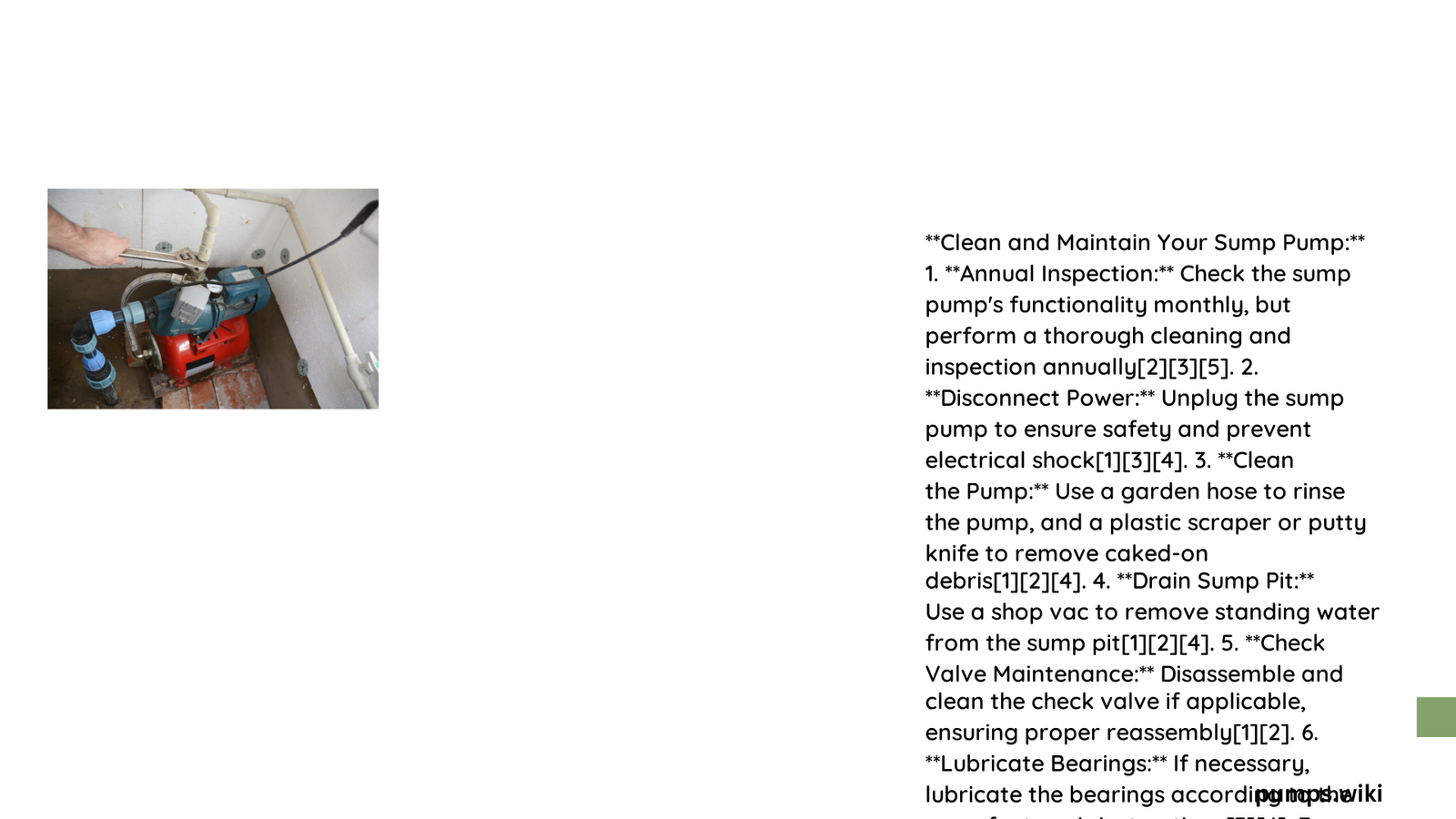Maintaining a sump pump is crucial for preventing basement flooding and water damage. A well-maintained sump pump ensures efficient water removal, extends equipment lifespan, and protects your home’s foundation from moisture-related issues. This comprehensive guide will walk you through essential techniques, tools, and strategies for effective sump pump maintenance and cleaning.
Why Clean and Maintain Your Sump Pump?
Sump pumps are critical home infrastructure that prevents water accumulation and potential structural damage. Regular maintenance offers several key benefits:
- Prevents unexpected failures
- Extends equipment lifespan
- Reduces potential water damage risks
- Ensures optimal performance during critical moments
What Tools Do You Need for Sump Pump Maintenance?

| Tool | Purpose | Importance |
|---|---|---|
| Protective Gloves | Hand Protection | High |
| Bucket | Water/Debris Removal | Medium |
| Wire Brush | Cleaning Surfaces | High |
| Vinegar Solution | Mineral Deposit Removal | High |
| Wet/Dry Vacuum | Thorough Cleaning | Medium |
How to Prepare for Sump Pump Cleaning?
Safety First
- Disconnect electrical power completely
- Wear protective gear
- Safety gloves
- Protective eyewear
- Sturdy shoes
Inspection Checklist
- Check power cord integrity
- Examine discharge pipe
- Verify float switch movement
- Inspect basin for debris
Step-by-Step Cleaning Process
Pump Removal and Initial Cleaning
- Carefully remove pump from sump pit
- Disconnect discharge pipe
- Clean exterior with soft cloth
- Remove visible debris and sediment
Deep Cleaning Techniques
- Use vinegar solution (2:1 water ratio)
- Scrub impeller and intake screen
- Rinse thoroughly with clean water
- Dry all components completely
Frequency of Maintenance
Recommended Cleaning Schedule
- Quarterly: Basic inspection and light cleaning
- Annually: Comprehensive deep cleaning
- After Major Storms: Additional emergency checks
Common Maintenance Mistakes to Avoid
- Neglecting regular inspections
- Using harsh chemical cleaners
- Ignoring unusual sounds or performance changes
- Failing to test pump functionality
Professional vs. DIY Maintenance
When to Call a Professional
- Persistent performance issues
- Complex mechanical problems
- Electrical system complications
- Age-related significant wear
Cost Considerations
- DIY maintenance: Minimal cost
- Professional service: $100-$300 per visit
Advanced Maintenance Tips
Preventive Strategies
- Install backup battery system
- Consider water-powered backup pump
- Use high-quality discharge pipes
- Implement proper drainage around foundation
Troubleshooting Performance Issues
Red Flags to Watch
- Unusual grinding noises
- Inconsistent water removal
- Visible rust or corrosion
- Frequent cycling
Technical Specifications to Monitor
| Parameter | Acceptable Range | Action Required |
|---|---|---|
| Pump Cycle Time | 5-10 seconds | Investigate if longer |
| Water Removal Rate | 30-50 gallons/minute | Check if below threshold |
| Electrical Consumption | 5-10 amps | Monitor for efficiency |
Final Recommendations
Consistent clean maintain sump pump practices are essential for home water management. By following this comprehensive guide, homeowners can significantly reduce water damage risks and ensure long-term pump reliability.
Pro Tips
- Document maintenance activities
- Keep maintenance log
- Replace pump every 7-10 years
Conclusion
Proactive sump pump maintenance is an investment in your home’s structural integrity and peace of mind.
